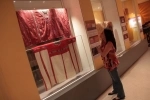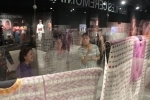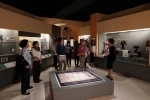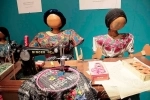Ixchel Museum of Indigenous Costume. Guatemala city - Guatemala
The task of the Ixchel Indigenous Costume Museum to compose an exhaustive and inclusive collection with copies of garments used in all the indigenous communities of Guatemala and, of all times, is a continuous activity. However, the effort made by the museum has produced positive results, since the Main Collection includes 7,801 fabrics from 147 municipalities and 34 villages, so that 181 communities are represented in it, dating from the late nineteenth and early twentieth centuries , until today.
The Textile Collection is safeguarded in appropriate conditions for its conservation and 60 of the objects, properly stored. The place where it is located, was built with specifications designed to prevent and control the deterioration factors (relative humidity, light, natural disaster threats, insect infestations, temperature, manipulation, vandalism), to ensure their conservation.
Main Collection
In view of the fact that the suit was not only constantly evolving, but that in some communities, it was in the process of disappearing, the task of collecting garments to document the indigenous dress of Guatemala and at the same time evidence its evolution and transformation was undertaken. For this purpose, funds were raised to include copies of most of the garments used in the communities. In addition, as far as possible, pieces were obtained that filled temporary gaps to complete the sample. The donation of private collections, especially those that were made in the first decades of the 20th century, contributed to enrich the museums collection as historical testimonies.
The main collection is made up of garments of clothing and various indigenous fabrics of Guatemala, which date from the late nineteenth and early twentieth centuries. The pieces, important signs of local and regional identity, includes 7,801 tissues originating from 147 municipalities and 34 villages, making 181 communities.
The collection is composed of a variety of everyday and ceremonial garments: huipiles or blouses, superhuipiles, cuts or skirts, sut or cloths for different purposes, perrajes or rebozos, tapes and tocoyales for the head, veils, scarves, ponchos , ponchitos, knee pads, slang, sacks, cotones, capixayes, overpantons, pants, shirts, girdles, napkins, tablecloths, ceremonial cloths, jackets, bands to adorn the images of the saints, as well as accessories, hats, ribbons, necklaces, chachales , earrings, rings, cotton backpacks, wool and henequen, sandals, among others.
The oldest pieces are mainly feminine, both for everyday use as ceremonial and include huipiles, superhuipiles, sut, veils, strips and napkins. There are some masculine ones pants, underpants, shirts, suts and overpantons. Also of interest are those used to adorn the images of the saints, such as the bands, others similar to sleeves without cuffs to cover the arms, so that when they are placed next to the mantle of the image, it appears that the latter is wearing a shirt; as well as the huipiles that were used to dress the images of the virgins.
Source: https://museoixchel.org




